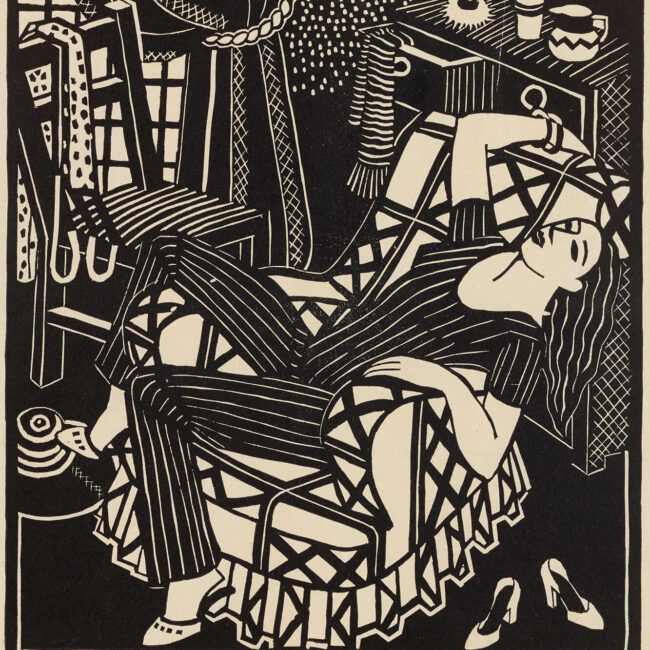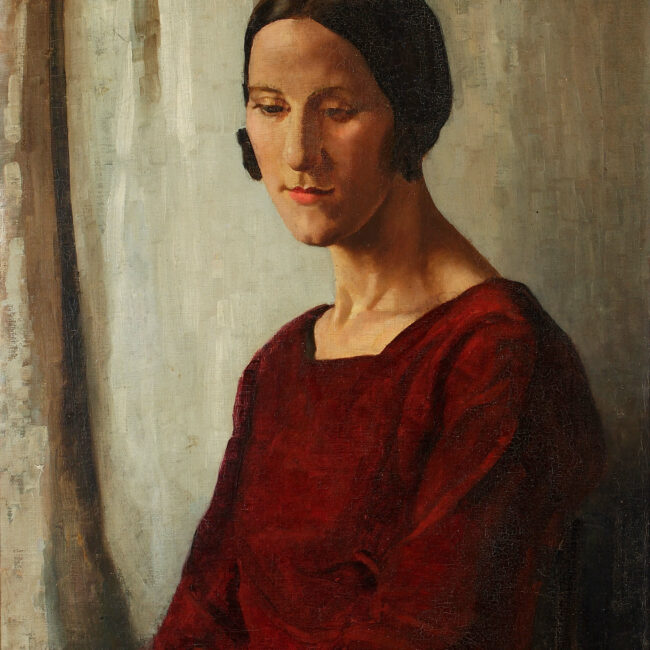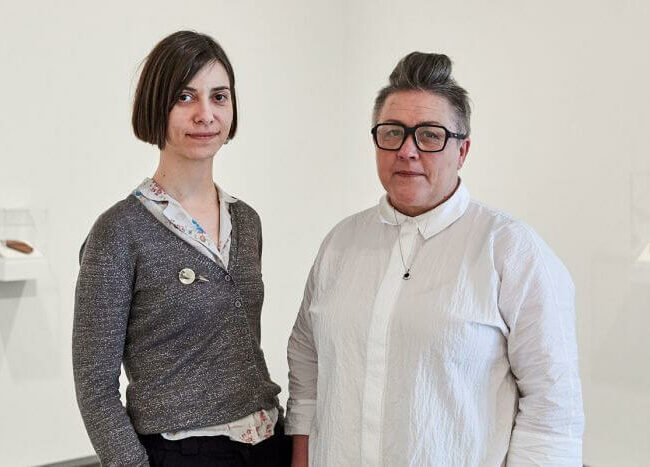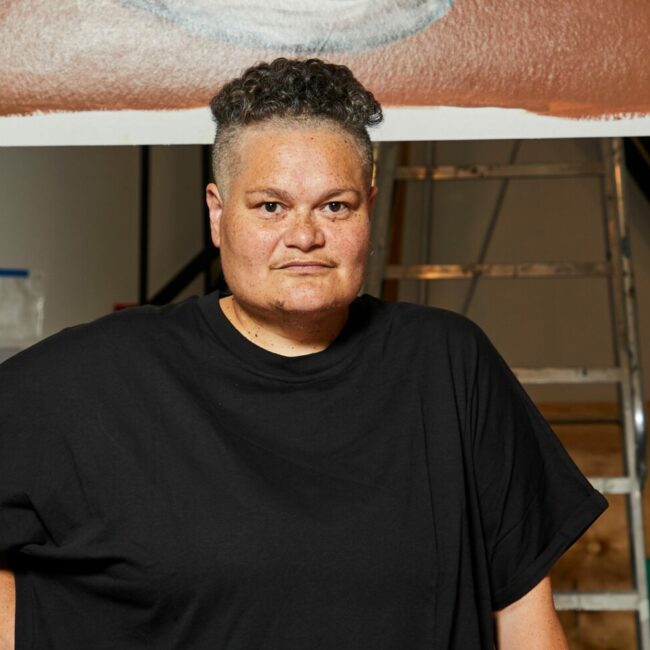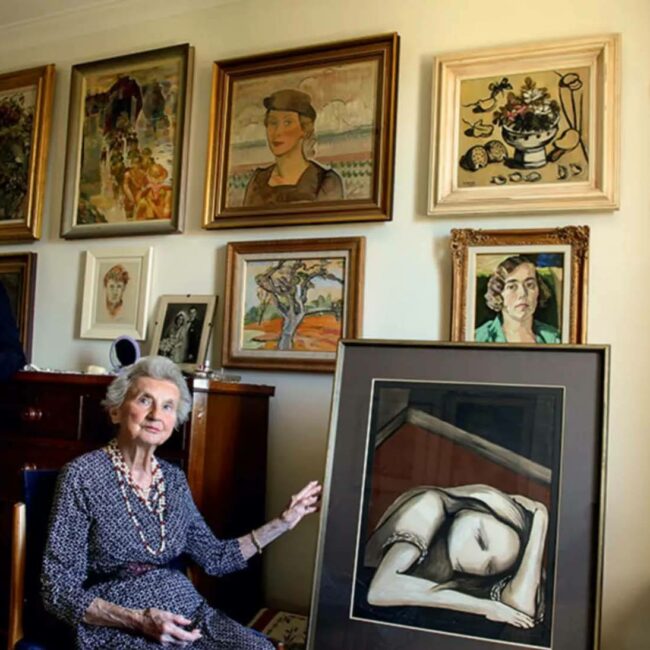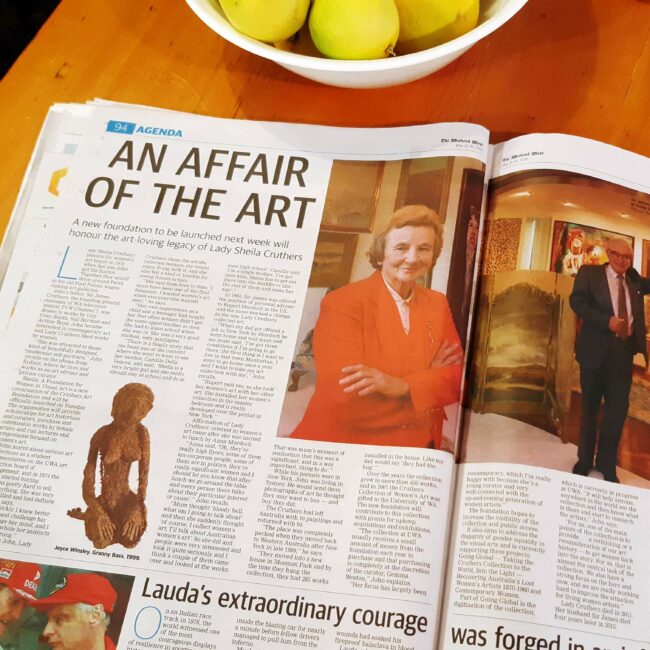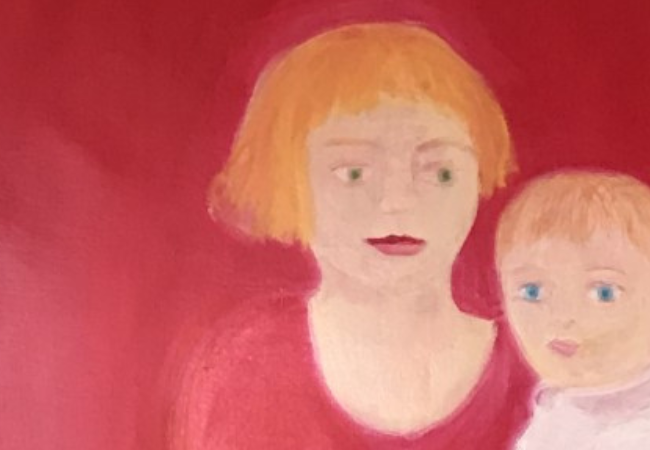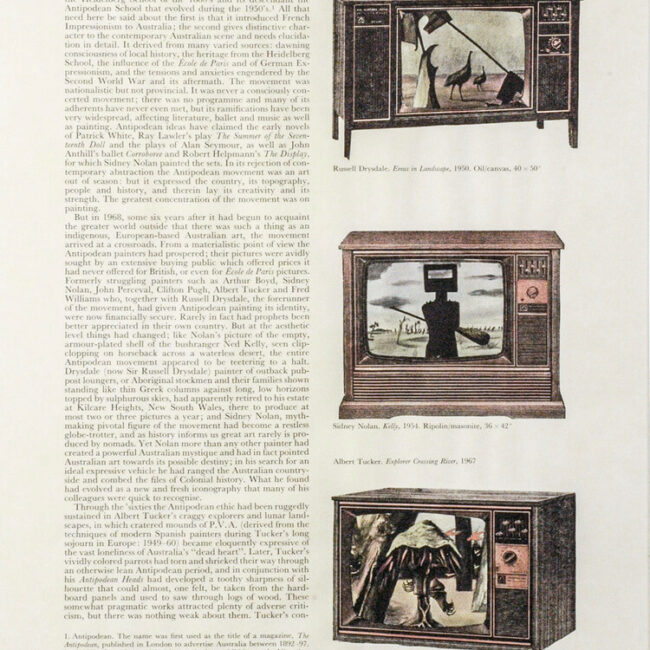Gemma Weston has been Curator of the Cruthers Collection of Women’s Art at the University of Western Australia since April 2013, and also maintains a independent practice, curating and writing on contemporary art. From 2011-13 Gemma was co-director of OK Gallery, Northbridge WA, and is currently one third of Pet Projects, a ‘conspiritorium’ that ran as an Artist Run Initiative in Bayswater, WA from 2016-17, and will exhibit at Campbelltown Arts Centre, NSW later this year. Gemma received a BA (Arts) with first class honours from Curtin University in 2007.
As curator of the Cruthers Collection of Women’s Art can you give an overview of what your position entails?
My job involves the usual curatorial activities, including devising an exhibition program based on the collection, as well as producing lectures and public programs; producing didactic panels and marketing material; facilitating public access to works in storage where necessary; facilitating the annual Cultural Gifts Program donations by the Cruthers family that transfer the works from the Deed of Bailment[1], as well as any other donations offered by third parties; campus display; cataloguing database administration; managing any loan requests, and liaising with the Curatorial Advisor of the collection – John – about any or all of this. It’s a full plate for 2.5 days a week but I’m never bored!
Given the origins of the collection as a family collection, what sort of impacts has that made upon your approach, or do you find that the practice and ethics of curating is consistent across different contexts whether the works have been acquired via curatorial selection or private gift?
I think the ‘ethics’ of curating remain somewhat consistent, in that a curator is a ‘caretaker’ with responsibilities to the work and to the institution, but shifts in context also shift the nature of that responsibility. Something fundamental to my thinking on the collection is how its existence within the institution impacts on the thematic parameters of acquisition and interpretation of what constitutes women’s art and women’s issues by the Cruthers family. In a private collection, this specific direction can operate as a radical statement against the canons of art history, but within a public institution, which has the effect of ‘canonising’ those themes as history, the collection can risk making essentialist statements about women’s experience over time. For example, the focus on the domestic interior, particular the kitchen, is very relevant to early modern art and to second wave feminist critiques of domestic labour, but a continued focus on it as a subject in contemporary art may obfuscate and trivialise the reality of contemporary women’s experience.
Thinking of your series of exhibitions from the collection, can you talk of these, given you present several curated exhibitions a year?
I’ve tried where possible to avoid ‘overarching’ themes connecting the entirety of the exhibition program, for reasons discussed above, but the exhibitions in themselves have individual curatorial theses.
Glitter: Pat Larter vs Lola Ryan (2014) involved travelling to the Art Gallery of NSW archive, where Pat Larter’s archives are held, to conduct primary research on the objects held in the collection. This exhibition was useful in both highlighting difference and forming connection, and for looking directly at some of the preconceptions around particular processes and aesthetics in terms of gender and value. Pat’s work has been re-examined in a few contexts recently, but much of the text published on her painting at this time had been written by a particular male art critic who seems to almost wilfully misunderstand them, so it was very satisfying to produce a counter-argument and highlight the value and innovation of her practice. It was also exciting to be able to make what I think is a meaningful connection between her paintings and Lola Ryan’s shellwork, from the La Perouse tradition – both of which have been overlooked by institutions previously because of their association with a feminized form of kitsch.

Installation view: Glitter: Pat Larter vs Lola Ryan, curated by Gemma Weston, Lady Sheila Cruthers Gallery, Cruthers Collection of Women’s Art, Lawrence Wilson Art Gallery, The University of Western Australia, Perth, 26 July – 27 September 2014
Commissions of Western Australian artists to make site-specific works in the Lady Sheila Cruthers Gallery – Shannon Lyon’s candy striped wall-painting for OBJECT LESSONS I: Painting (2015) and Anna Dunnill’s delicate sculptural drawings for Self Portrait as shared dream (2014), for example – have also, I think, been very successful connecting the collection to a new audience. It’s to me important that it be presented as a living resource and not a historical artefact, and that artists of my generation are able to respond to its concerns.

Installation view of work in progress: Shannon Lyons, All things must pass (apart from the poetry of their passing) 2015, OBJECT LESSONS I: Painting, curated by Gemma Weston, Lady Sheila Cruthers Gallery, Cruthers Collection of Women’s Art, Lawrence Wilson Art Gallery, The University of Western Australia, Perth
Thinking also of placement of the collection within the University, can you detail some of the academic programs and educational aspects of the collection that are in place or being developed.
I present an annual lecture for Gender Studies for a unit called ‘Reading Bodies’, which for the last few years has resulted in the students writing one of their assignments, and occasionally exam essays on the collection, so it’s fantastic to see new dialogue and awareness be generated around the collection that way – although I suppose it is sort of by force.
Last year Janice Lally, who is Curator of Public Programs here at LWAG, and I developed a program with Rosalie Primary school, in response to Kelly Doley’s work Things Learnt About Feminism 2014, which was exhibited at the gallery. We discussed feminism and protest poster making with a group of year 5 students, using on Kelly’s work and some additional collection works, screen printed posters from 1980s/90s poster collectives, like Another Planet and Redback Graphics as examples. After this, the students made their own posters and a video that highlighted issues of concern to them. It was great to see how much they understood of feminism, and of issues like climate change, mental health and the impact of the internet on their lives, and how they were able to use humour and wit to convey their ideas.
Can you talk about the new acquisitions made since the presentation of the collection, either as a list such as you have emailed me or in terms of some specific items that you feel should be mentioned?
The collection becoming a Deductible Gift Recipient has meant that we are now able to receive gifts through the Cultural Gifts Program, which enabled the donation of Erica McGilchrist’s 1954 painting from the Kew Mental Hospital Series, The Abandoned. As you’ll know, Linda Short at Heide had identified this as an important example of her early practice.
We also received a substantial direct donation of close to 40 prints and works on paper by Lesbia Thorpe from an anonymous donor.
Purchases have been limited, but I’ve been focusing where possible on contemporary art, as holdings from the last 20 or so years – when the family were negotiating the donation – require expansion, and as well areas that are so far underdeveloped, like photography. I’ve acquired photographic works from Thea Costantino and Destiny Deacon, as well as new work from Raquel Ormella, Agatha Gothe-Snape, Anna Kristensen and Teelah George. I was also able to secure Kelly Doley’s major work, Things Learnt About Feminism 1# – #95 2014, 95 hand painted posters about feminism derived from her Learning Centre: Two Feminists performance at West Space, Melbourne in 2012, where she invited 16 different participants to teach her about feminism. It’s an important work I think, because it celebrates and critiques the achievements and challenges of feminism, even its limitations.
What is your current exhibition in the Lady Sheila Cruthers Gallery?
On show at Lawrence Wilson currently is The Likeness, a chronological examination of over 100 year of self portraiture and portraiture, one of the collection’s key theme, which features some of the CCWA’s most iconic works – including Freda Robertshaw’s Standing nude 1944 and Elise Blumann’s 1937 Self portrait. The latter has just been re-framed to approximate its original condition, following research by Dr Sally Quin for her book on the artist: Bauhaus on the Swan: Elise Blumann, an émigré artist in Western Australia, 1938-1948, and looks fantastic. Certain works in The Likeness will be swapped out for others during the exhibition, so it will end up telling a number of different stories about the evolution of portraiture and self portraiture over its run, which ends on July 8th. After that, Country and Colony, opening July 22nd, will showcase a range of perspectives on the Australian experience, and will feature a number of new acquisitions for the collection.
As a rounding off, perhaps you could also bring in some of the material that came up at the Art Association of Australia and New Zealand conference last year (2016) with your presentation?.
My AAANZ talk examined some of the ideas I discussed in relation to your second question, the ethics and challenges of curating a thematised collection already defined by its ‘difference’ from institutional collections, and how this thematic approach has impacted on the reading of particular collection works. A key example of this is Miriam Stannage’s Still life 1974 – part of her Kodachrome series that replicated photographic slides as large scale paintings. Still life features, as its ‘image’ within the painted slide format, a series of real-life kitchen implements. Between its reproduction with other works in the Kodachrome series in an article by Patrick Hutchings in Westerly magazine (September 1975), and the Art Gallery of Western Australia’s loan of the work from the Cruthers family for a retrospective of the artist’s work in 1989, the work’s title had shifted slightly, to ‘Kitchen still life’. The original title – Still life, also used by Hutchings in his article – is written by the artist on the verso. In the process of being interviewed by Lee Kinsella for a monograph on her work, published shortly after her death last year, Stannage evidently described her unease with the prioritisation of the work’s subject over its play of image-object; Kinsella notes “…She remains resistant to having her work interpreted on the basis of being a female artist, and so it was a source of irritation to her that Kitchen still life (sic) 1974, the only Kodak Slide painting that referred to a domestic space, was acquired to be included in a collection of women’s art.” (See Lee Kinsella (ed.), Miriam Stannage: Time Framed, UWA Publishing, 2016).
Still life has often been presented, in its CCWA context, with other ‘domestically’ themed works, such as Jenny Watson’s My mother’s kitchen 1977 and Helen Grace’s Christmas Dinner 1979, which tends to somewhat distort the concerns of the each artist and can risk, in chorus, sentimentalizing what is in the case of all three artists intended as a form of critique. This challenge, of respecting artistic intention but also showcasing the aspects of the collection that make it unique and idiosyncratic – its partiality and its private history – is, I think, an important one to consider moving forward, particularly as the collection acquisition policy specifies that particular themes – the domestic environment, the body, self portraiture, children and family life, gender issues, for example. Something that I’m very interested in is how the collection can remain radical when it is speaking about these themes with the authoritative voice of the institution, so it doesn’t – to quote yourself quoting the great Joan Kerr in Into the Light[2] – “self congratulate itself on its revolutionary outlook, despite promulgating a reality that is different.”
AFTERWORD BY JULIETTE PEERS
Rather than focussing on how the Cruthers Collection now sits within the context of being in a public artspace, i.e. the Lawrence Wilson Art Gallery or within the academy itself as represented by the University of Western Australia, ideas that are effectively outlined above, I am engaged by some issues leading out of your answers. These ideas remain “wicked” problems, that often resist resolution, or are avoided because their touchy and contradictory nature, and the complex debate that they raise.
The relationship between outlying or dissident knowledges and the centre/canon is one such wicked problem, given that public culture routinely celebrates radical and revolutionary energies, whilst endorsing and maintaining rigid structures and hierarchies. We live in an era of an institutionalised avant garde, where even conservative regimes (at least in democracies) fund and support creative arts that are not necessarily easy or accessible to a general audience. Due to global cold war trends, the avant garde became institutionalised in Australian public culture towards the end of the Menzies era (early 1960s), despite Sir Robert Menzies himself being a cliched byword for arch-conservatism in Australian visual arts patronage.
Miriam Stannage’s unease with the placement of her work raises a major persistent irony of feminist curating and art writing. Down the generations certain women artists at any given era have disliked being viewed from a gendered perspective. Alice Bale, for example, would likely have been equally uneasy as the very different Stannage about feminist narratives being evolved around her works by later generations. Especially in the 1990s I recall energetic disavowals of, yet simultaneously complex and reluctant acknowledgements of, the need for feminism within public discussions of art in Australia, particularly at live events such as artist’s talks or symposia group line-ups. The compulsion to talk feminism away, or only identify with certain types of acceptable, non-tainted feminisms, and not with other versions of feminism, suggests that feminism was a touchy and live subject, despite being claimed to be seemingly irrelevant in contemporary art practice at that date. Are we discussing the importance of respecting artistic integrity or ratifying career anxieties that persist in an artworld where the romantic modernist myth of the “genius”, independent, self-made, disdainful of convention and restrictions still holds traction? For an artist to present as anything less than self confident and assured, when women artists are still routinely assumed in public culture to be apologetic and derivative, entails an admission of failure, a fatal flaw when corporate and public culture seems to still endorse a neo-Darwinist narrative of winners and losers.
Some artists have always been uneasy with curatorial or academic narratives written around their work, and then there is the truism that artists are often the worst placed to read sub narratives and implicit content emerging in their work. The increasing fusion of curator and artist career paths in the past two decades means that the antagonistic romantic conflict between dealers/collectors/curators/critics/academics on the one hand and artists on the other has become increasingly irrelevant. Yet such conflict is often played out ritualistically, despite the more direct overlap of the two roles. Perhaps one could also throw into the mix Griselda Pollock’s recent observation that the original Impressionist group shows contained more paintings by women than modern professionally curated and documented blockbusters that present a scholarly view of an impressionist movement whose gender balance is not borne out by the historical record. Pollock surely advocates for the ongoing relevance of feminist interventions in high level curatorial and academic discussions of art even in the present day.
In a museological and curatorial context, the afterlife of bequeathed properties and collections is volatile. Should the industry norms of public institutions prevail – and given the vulnerability of public collections to the shifting values of fashion and peer group consensus – which era’s “norms” should be respected? Conversely ought donors have the option to “future-proof” their gifts, to preserve their beliefs and intentions in amber? Do collections and institutions need to be able to modify donor stipulations in order to factor in emergent technologies and social practices that were not known when the gallery was established?
[1] When the Deed of Gift covering the donation of the Cruthers Collection of Women’s Art to the University of WA was signed on 30 June 2007, a Deed of Bailment was also signed. This Deed covers the conditions under which UWA agreed to store the entirety of the CCWA, which was to be gifted to UWA in yearly tranches.
[2] Into the Light: the Cruthers Collection of Women’s Art, eds John Cruthers and Lee Kinsella, UWA Publishing, Perth, 2012.





